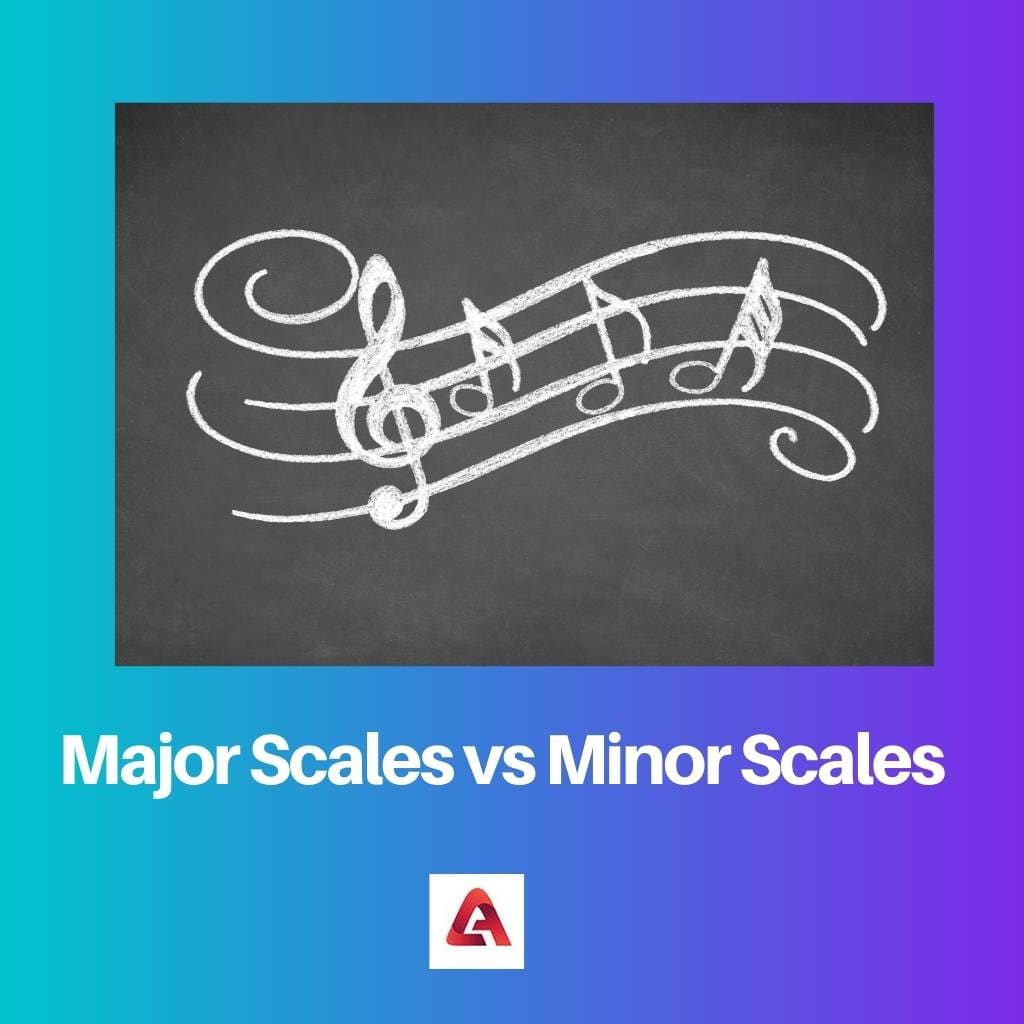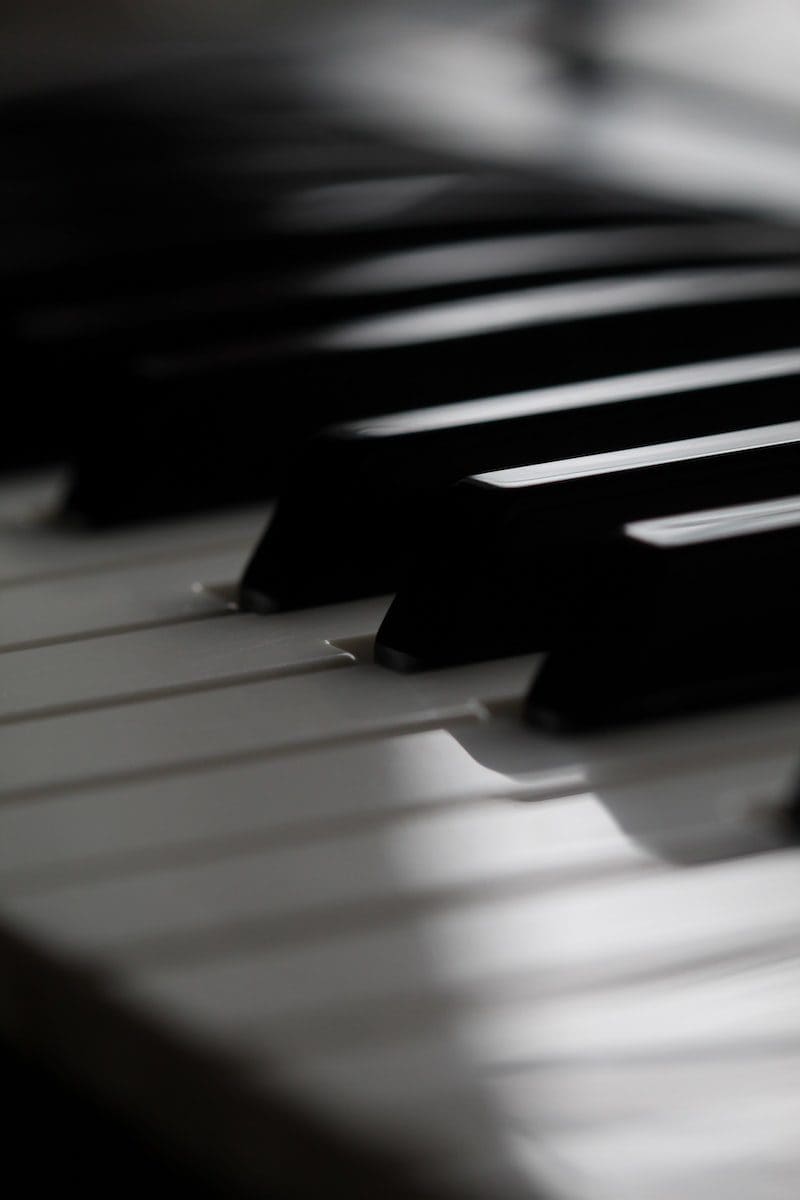Usually, people love to listen to music according to their moods. Some people use to compose songs based on music.
To compose music, an individual should learn and operate according to their scales. The Major and Minor scales had used to frame the themes.
Key Takeaways
- Major scales have a happy and uplifting sound, while minor scales create a gloomy atmosphere.
- Major scales follow the pattern of whole-whole-half-whole-whole-whole-half steps, whereas minor scales use whole-half-whole-whole-half-whole-whole steps.
- A minor scale’s third note is a minor third above the tonic, while a major scale’s third note is a major third above the tonic.
Major Scales vs Minor Scales
The difference between Major Scale and Minor Scale is that Major Scale is a musical scale popular in Western music. Minor Scale had used to compose music consisting of three different scales in Minor Scales. The third scale degree in the Major Scale is a major composing scale where it is minor in Minor Scales.

Major Scale is a musical scale that will use commonly to compose music. These Major Scales use to frame Western Music.
The Major Scales are one of the scales in Diatonic Scales, which consists of seven notes. Many of the musical scales contain seven notes as Major Scales.
In Contrast, Minor Scales are the musical scales that had used to compose music. These Minor Scales consist of three scales based on their composition, where these musical scores will disable for the short term.
Harmonic, Natural, and Melodic are the three kinds of Scales in music theory under Minor Scales. The three patterns are unique and have their way of composition.
Comparison Table
| Parameters of Comparison | Major Scales | Minor Scales |
|---|---|---|
| Meaning | Major Scales are one of the musical scales having major work in composition. | Minor Scales are one of the musical scales that contain three designing scales to compose music. |
| Uses | These scales are popular to compose Western music and can create other kinds of themes. | Minor Scales use to convey the reflection of anger. It can compose every moment of anger. |
| Notes | There are seven notes present in Major Scales. | Minor Scales consist of 3 to 7 notes. |
| Design | Major scales consist of seven different designs that help in composition. | Minor scales consist of three different designs that help to compose several emotions. |
| Difference | In Major Scale, the third scale degree in major over Cordial notes. | In Minor Scale, the third pattern scale is minor over Cordial notes, where it is over the root in the minor seventh chord. |
What are Major Scales?
Major Scales are one of the musical Scales that helps to compose various styles of music. These are popular in playing Western Music.
These Major Scales contain seven notes with different patterns. The Major Scales are one of the scales in Diatonic Scales where it consists of Seven Notes. In Major Scale, the third scale degree is major over cordial Notes.
The Major Scales consists of the 8th note, which corresponds to the 1st note with its high frequency. These patterns are known as octave designs that help to create emotions in music.
The Seven designs in the Major Scales in sequence are Tonic, Supertonic, Mediant, Subdominant, Dominant, Submediant, and Leading tone, and the 8th design is similar to the first pattern.
Usually, the Major Scales contain modes along with the scale patterns. Seven Modes will use in Major Scales, they are,
- Dorain
- Ionian
- Phrygian
- Mixolydian
- Lydian
- Locrian
- Aeolian
The above patterns will appear beyond the Major Scale Patterns. Major Scales contains seven pitches and 7 to 35 forte numbers with seven chords.
Major Scales will take shape in a whole tone that separates the tetrachords into two forms, whereas a single tetrachord contains two whole tones by having a semitone.

What are Minor Scales?
Minor Scales are one of the musical scales that helps in music composition. Usually, these Minor Scales have three patterns that compose the emotions in melodies.
Harmonic, Natural, and Melodic are the three kinds of designs that are in music theory under Minor Scales. The three patterns are unique and have their way in composition.
Primarily musicians choose the natural patterns to compose, and these patterns will popularly use in the world widely. Minor Scales use to convey the reflection of anger. It can create every moment of anger.
In Minor Scale, the third pattern scale is minor over cordial notes, where it is over the root in the minor seventh chord.
The Natural Minor Scale will provide a sense of the Aeolian mode of modal music. Minor Scales consist of seven chords, where the 7th chord contains 5 types of rhythms.
Minor Scales use to create the emotions like suspense, fear, and anger. The Minor Scales carry the half steps between the 2nd and 3rd scales, 5th and 6th scales, and 7th and 8th scales.
These half steps show the difference between the Major and Minor scales. The patterns of the Major Scales have some formulas to compose the music, and these will compare with the ice cream flavours like Chocolate, Strawberry, and Vanilla.
The ear and the sight can find the composing theme, whether the melody is Minor Scale music or Major Scale Music.

Main Differences Between Major and Minor Scales
- Major Scales are famous for composing Western Music. In Contrast, Minor Scales use to create the emotions like fear, anger, and suspense.
- Major Scales contain Seven modes, whereas the Minor Scale has 3 to 7 notes.
- The Major Scales have seven patterns, whereas Minor Scales contain three pattern designs.
- Major Scales and Minor Scales can differentiate by hearing and eyesight.
- In the Major Scale, the 3rd Scale degree is Major over Cordial notes, where In Minor Scale, the third pattern scale is minor over cordial notes, where it is over the root in the minor seventh chord.



